If you have the chance to gaze at the pitch-black sky, then you possess an extraordinary collection of stars. Without any equipment, one can observe approximately 2500 stars in the Milky Way, and with the aid of binoculars or a telescope, this number can increase to 5800-8000. However, this accounts for only a fraction of the total count. So, what is the actual number of stars within the Milky Way galaxy?
Scientists estimate that the total count of stars in the Milky Way ranges from 100-400 billion, although some individuals argue that the number may be as high as a trillion. Why do these variations exist? The reason is that our view is limited to the inside, and there are regions hidden from Earth’s zone of visibility.
Structure of the Galaxy


This particular image taken by the Hubble Space Telescope showcases only a minuscule fraction of the vast expanse that is the sky.
First and foremost, it is worth noting that our Solar System resides within a spiral-shaped galactic disk that spans a staggering 100,000 light-years. Furthermore, our position is situated approximately 30,000 light-years away from the central region. Consequently, there exists an immense chasm between us and the distant opposite side.

An artistic representation of the composition of the Milky Way can be observed next. The observation of this phenomenon presents another challenge. Certain stars emit more light than others, sometimes overpowering their neighboring stars. The furthest stars visible to the naked eye are situated 1000 light years away. The Milky Way is filled with stunning luminosity, although a significant number of these stars remain concealed behind a haze created by gas and dust. This extended trail is commonly referred to as the Milky Way.
Stars in our galactic “neighborhood” are available for observation. Picture yourself at a party in a room where it’s crowded with people. You are standing in one corner and are tasked with determining the precise number of individuals in attendance. However, that’s not all. One of the guests activates a smoke machine, causing the entire room to fill with a dense fog, obscuring the view of those standing farther away from you. Now, try to count them!
However, no need to fret, as there are always ways around it. Infrared cameras provide a solution for navigating through the dust and smoke. Noteworthy projects in this field include the Spitzer telescope, COBE, WISE, and the German Space Observatory.
All of these initiatives have emerged within the past decade with the aim of studying space using infrared wavelengths. This enables the detection of hidden stars. However, it also poses limitations, thus scientists are compelled to make estimations and propose tentative figures. The observation process commences with the examination of star orbits within the galactic disk. This allows for the calculation of the Milky Way’s orbital velocity and period of rotation.
Conclusions regarding the number of stars present in the Milky Way
The Milky Way completes one full revolution around its galactic center every 225-250 million years, with a staggering velocity of 600 kilometers per second.

This image depicts the Milky Way galaxy captured using the Spitzer Space Telescope, which operates in the infrared spectrum.
Subsequently, the mass of the galaxy is determined, with 90% of it being composed of dark matter. The average mass of stars in the galaxy is then calculated. Through this process, scientists estimate that there are approximately 200-400 billion stars in the Milky Way.
In the future, advancements in technology may allow for a more precise count of every star in the galaxy. Alternatively, space probes could be developed to travel vast distances and capture images of the galaxy from unique perspectives, such as from above the galactic center. However, at present, our understanding of the number of stars in the Milky Way is based primarily on mathematical calculations.

Stars are celestial bodies composed of hot gas and are significantly larger than our planet, Earth. Their color can vary depending on their temperature and can range from blue to yellow or red. Due to their great distance from us, stars appear to us as tiny, luminous points. When stars come together in vast numbers, they create massive galaxies.
This category comprises of celestial systems that are not large enough to develop into the spiral configuration observed in massive stellar systems like Andromeda or the Milky Way. These systems typically consist of approximately ten million stars and are significantly larger and denser compared to the Milky Way, which is classified as a spiral system.
Milky Way and cluster of galaxies


A group of galaxies nearby
Our stellar system is commonly known as the Galaxy or often called the “Milky Way Galaxy”. It is classified as a spiral type celestial system, although some astronomers have theorized that it could be intersected by another spiral galaxy.
A three-dimensional representation of the Milky Way
In a similar manner to how individual stars form clusters, galaxies also group together, and particularly strong groupings of clusters are referred to as superclusters. The Milky Way, our own galaxy, is a member of a cluster known as the Local Group. This particular cluster consists of approximately thirty-six galaxies of varying sizes and classifications, with our Milky Way being regarded as one of the largest. Currently, the exact number of stars within our galaxy cannot be determined; however, astronomers estimate that there are between 200 to 400 billion stars, depending on the method of calculation.
Is it possible to quantify it?
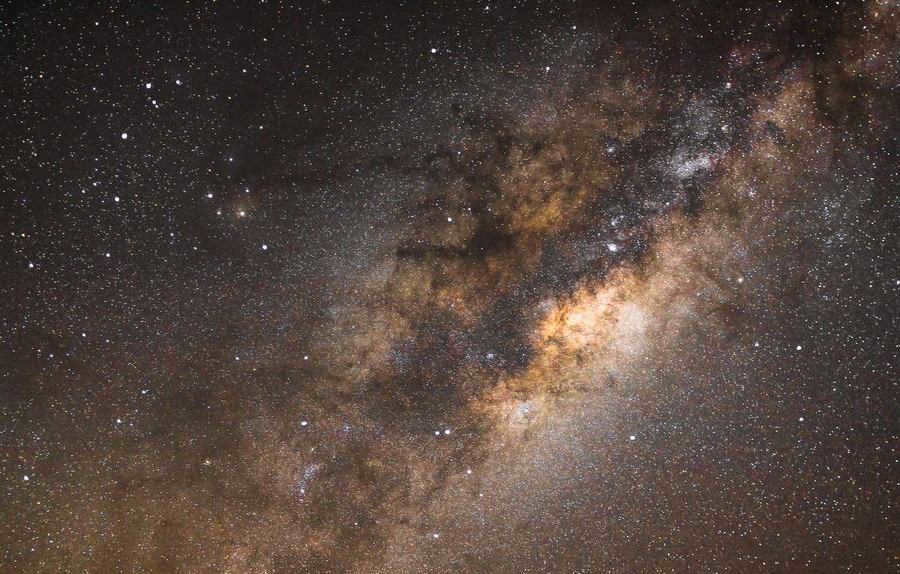
Towards the Sagittarius constellation
In ancient times, astronomers observed the universe and attempted to tally the quantity of stars, which at the time appeared as motionless dots in the sky. Many years have passed, yet the desire to enumerate them persists to this day. Within the Milky Way, there exist over 200 billion stars, each of which, like humans, is born and dies, giving rise to brand new stars from their remnants. The lifespan of these stars can be measured in millions and billions of years. It is difficult to fathom, and even more challenging to examine each and every one of them.

So, what is the estimated time needed to determine the total number of stars in our galaxy? As of now, this question remains unanswered. However, it is certain that if given the chance to comprehensively study every single star and document all the findings, the amount of information would be immense. In fact, if we were to allocate just one page to describe each of the two hundred or four hundred billion stars, it is highly likely that the volumes of books required to contain this data would exceed the capacity of the largest library in the world.

The Milky Way comprises only a small portion of the fifty billion galaxies present in the universe. As our understanding of the cosmos deepens, it becomes increasingly evident that numerous enigmas await mankind in the expansive realm of outer space.
Take a moment to contemplate the vast number of stars that exist within our galaxy

Stars are massive celestial bodies composed primarily of hot gases. Their sizes can be many times larger than that of our Earth. The color of stars varies depending on their temperature, ranging from blue to yellow to red. Due to their immense distance from us, stars appear as tiny glowing dots in the night sky. When stars come together in vast clusters, they create enormous galaxies that consist of tens of millions of stars.

This particular image captured by the Hubble telescope depicts a minuscule portion of the celestial expanse.
To commence, our Solar System is positioned within a spiral-shaped galactic disk that spans a staggering 100,000 light-years. As for our location, we find ourselves approximately 30,000 light years distant from the central region. Hence, an immense chasm separates us from the opposite side.


An artistic representation of the structure of the Milky Way
Another challenge arises in observation. Certain stars shine brighter than others, sometimes overshadowing their neighboring stars. The furthest stars visible to the naked eye are located 1000 light-years away. The Milky Way is filled with brilliant lights, although many of them are concealed by a haze of gas and dust. This elongated trail is commonly referred to as the Milky Way.
Stars in our local region of the galaxy are available for observation. Visualize that you have arrived at a party in a space where the entire venue is filled with individuals. You find yourself in one specific corner and are requested to identify the precise quantity of individuals present. However, that represents only a fraction of the total attendance. One of the attendees activates a smoke machine, resulting in a dense fog enveloping everyone standing farther away from your location. Now, try to enumerate them all!
A celestial body is a massive gaseous object in which there have been or will be thermonuclear reactions.
Many people often confuse celestial bodies with planets. So, let’s look at the definition of a planet. It is a celestial body that orbits a star in its own orbit. The key point is that planets do not have any thermonuclear reactions, and their light is simply a reflection of the radiation from the star.
All celestial bodies move across the sky, relative to our planet, of course. But how exactly do stars move across the celestial sphere? You can find the answer here.

Planet and star
Stars: The Beacons of the Universe
It is worth noting that not all celestial stars are referred to as luminaries, only cepheids. Cepheids possess an intense level of radiation, thousands of times greater than that of the sun.
Cepheids belong to a distinct category of celestial stars characterized by their high luminosity. Additionally, they are classified as pulsating variable, supergiant luminaries. The relationship between period and luminosity in Cepheids has been extensively researched among variable objects. This research enables them to serve as standard candles, which are used to measure distances to cosmic objects, even those that are extremely far away. For instance, astronomers rely on Cepheids to determine the distance to other galaxies.
It is for this reason that Cepheids are referred to as the guiding lights of the Universe.

Cepheids are stars that are used as distance indicators in astronomy. They are variable stars, meaning that their brightness changes over time. This variability is due to the pulsations of the star’s outer layers. By measuring the period of these pulsations, astronomers can determine the intrinsic brightness of the star, which can then be used to calculate its distance from Earth.
The Milky Way and a group of galaxies.

A nearby group of galaxies
Our star system is commonly referred to as the Galaxy or the Milky Way Galaxy. It is classified as a spiral type cosmic system, although some astronomers have proposed that it might be intersected by another spiral galaxy.
A 3D representation of the Milky Way
Just as stars form clusters, galaxies also form clusters, and large groups of clusters are known as superclusters. Our Milky Way is part of a cluster called the Local Group. This cluster consists of around thirty-six galaxies of various sizes and types, and our Milky Way is considered one of the largest. Currently, the exact number of stars in our galaxy cannot be determined with precision, but astronomers estimate that there are between 200 to 400 billion stars, depending on the calculation method.
How Many Stars Are There in Our Galaxy?
As you may be aware, our home planet Earth is situated within the vast expanse of the Milky Way galaxy. Astronomers have estimated that there are anywhere from 200 to 400 billion stars within this galaxy. These stars vary in terms of their physical properties, characteristics, age, and distance from us.
However, it is important to note that the exact number of stars within the Milky Way is still unknown, as ongoing research and exploration of the galaxy continues to this day.
Nevertheless, there are certain stars that are already well-documented and familiar to us. These are primarily the stellar bodies that are visible from Earth or those that are relatively close to our planet. In fact, astronomy has even established an approved table of stars.

The Milky Way
What is the total number of stars in the observable Universe?
We must bear in mind that the Milky Way is not the sole such system. The question then arises: how many galactic associations exist in the vastness of cosmic space? The truth is, there is no definite answer. It is possible that our Universe is truly boundless. This implies that it can accommodate an infinite number of galaxies and, consequently, stars.
Based on current understandings, there is a visible portion of the Universe. It is also referred to as the observable or Metagalaxy. In other words, this is the region that can be observed from Earth or through the use of spacecraft and telescopes.
Based on recent data, the visible region includes various galaxies, although the precise quantity remains unknown. Scientists estimate that the number could range from 500 billion to 2 trillion.

There are countless galaxies out there
It’s fascinating to note that our own galaxy, the Milky Way, is just one of many. If we consider that there are 2 trillion galaxies in the observable part of space, and each of them holds 400 billion stars, the math works out as follows:
2,000,000,000,000 * 400,000,000,000 = 8 x 10^23
That’s a total of trillions upon trillions upon trillions and one thousand stars. From this perspective, the universe truly seems infinite.
It is difficult to fathom the vast number of stars that populate the entirety of the celestial sphere.
With the advancements in the field of astronomy, scientists have come across numerous extraordinary stars scattered throughout the universe. Yet, they have yet to determine an exact count. However, this should not discourage us. It is possible that in the future, we will have the ability to explore the farthest reaches of outer space, leading to the resolution of many enigmas.
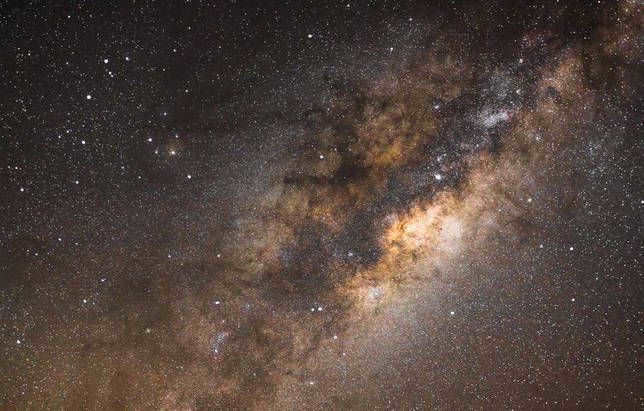
Towards the constellation of Sagittarius
In ancient times, astronomers observed the universe and attempted to calculate the quantity of stars, which at that time appeared as fixed points in the sky. Many years have passed, yet the desire to enumerate them remains undiminished. Presently, over two hundred billion stars have been counted within the Milky Way, which, like humans, are born and die, with new stars being formed from their remnants, and their lifespans measuring in the millions and billions of years. It is difficult to fathom, and even more challenging to study each and every one of them.
Once upon a time, in the pages of a book…

The question of how many stars exist in our galaxy remains unanswered. The exact number is still unknown, and it is impossible to determine it at this time. However, if the opportunity arises to thoroughly study each star and record all the information in written form, it would be a monumental task. With an estimated two hundred to four hundred billion stars, describing each one on a single page would require a library larger than any in the world.

The stars that compose the Milky Way constitute just a tiny fraction of the fifty billion galaxies present in the cosmos. The more we delve into our universe, the more apparent it becomes that there are numerous unresolved enigmas awaiting humanity in the vast expanse of space.
Contemplate for yourself the sheer number of stars residing within our galaxy.
The cosmos consists of matter organized into a diverse array of forms: gas, dust, solid and frigid matter (planets), high-temperature gas and plasma (stellar nebulae and stars), and the enigmatic dark matter.

A star is a massive celestial body composed of gas and plasma that emits its own light, in contrast to planets, which reflect light. The Sun is a typical example of a star. However, stars not only emit visible light, but also generate heat (infrared radiation), radio waves, and various other forms of electromagnetic radiation.
Stars can be considered the primary constituents of the Universe, as they account for over 90% of all observable matter. Additionally, stars are located at considerable distances from Earth, with each star (excluding the Sun) being much farther away than any planet in our solar system.
What is the total number of stars in the Universe?

Sirius, the most brilliant star in our sky, can be observed in all its magnificence and luminosity during the winter season.
In the year 2004, a group of Australian scientists embarked on a quest to estimate the number of stars in the universe. To conduct their calculations, they selected a random section of the sky and measured its brightness. Dividing this result by the average brightness of a single star, they were able to determine the number of stars within that square. Extrapolating this finding to encompass the entire celestial sphere, they concluded that the universe contains a staggering 70,000,000,000,000,000,000,000 stars! This quantity far exceeds the total number of grains of sand found on our planet.
The origin and lifespan of celestial bodies
Celestial bodies, similar to living organisms, are created, exist, and eventually perish. Their lifespan is so extensive (up to tens of billions of years) that astronomers are unable to document the complete life cycle of even a single entity. However, scientists have the ability to observe celestial bodies at various phases of development.
Celestial bodies form from clouds of gas and dust. They condense as a result of gravitational attraction between particles. The temperature and density of the matter escalate significantly. During this phase, it is no longer a cloud, but has not quite become a celestial body. This stage is referred to as a protostar. Over time, its temperature rises to several million degrees, initiating thermonuclear reactions. The protostar evolves into a celestial body and emits energy for countless billions of years.

The star continues to emit light until the temperature of its outer layers decreases. Over time, the star’s hydrogen reserves are consumed, causing the thermonuclear reactions within the star to diminish. As a result, the outer layers of the star cool down and emit a red glow, transforming the star into a red giant. The red giant gradually loses its brightness until it eventually extinguishes. Depending on its size, a red giant can transform into a red dwarf or undergo a supernova explosion, transforming into a white dwarf. From there, the white dwarf may fade away, become a neutron star, or collapse into a black hole.


When stars reach the end of their lifecycle, their thermonuclear reactions diminish. This leads to the compression of the star by gravitational forces, causing it to transform into a white dwarf.
What are the various types of stars?
Stars vary in terms of temperature, age, mass, size, density, luminosity, and chemical composition.
When it comes to temperature, there are different colors of stars: red, yellow, white, and blue. Out of these, the red stars are the coolest, with a surface temperature of no more than 3000°C. Yellow stars, like our Sun, have a temperature of approximately 6000°C. White stars are even hotter, ranging from 10,000 to 20,000°C. The bluish stars are the hottest, reaching temperatures of over 30,000°C (sometimes up to 100,000°C). However, these temperatures only refer to the surface of the stars. Inside these celestial bodies, the temperature can soar to a scorching 20 million °C.

A white dwarf is a star that has a large mass, roughly the size of our sun, but a much smaller radius, similar to the radius of the Earth. However, despite its small size, the density of a white dwarf is incredibly high – the mass of just 1 cm3 of its substance is equivalent to 29 tons.
Stars are classified as giants or dwarfs based on their size. White dwarfs, in particular, have diameters that can be more than 100 times smaller than the Sun, while their mass is approximately the same as the Sun’s. In terms of quantity, these dwarf stars make up around 3 to 10% of the total stellar “population” in our galaxy.
The more massive the stars, the more uncommon they are in the vastness of space. Giants, in particular, are exceedingly scarce. The most colossal of them all are known as red giants. Take, for instance, the red star Betelgeuse located in the Orion constellation, which boasts a diameter more than 300 times that of the Sun. Similarly, the red giant Antares in the Scorpius constellation measures a staggering 450 times the diameter of our own solar luminary, surpassing even the orbit of Mars.
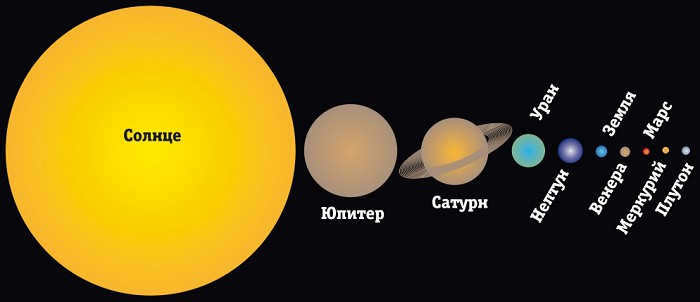


One of the largest stars currently known is Mu Cepheus, a red supergiant. The size of this star is so immense that it could contain the entire solar system, including Jupiter and its orbiting planets. Mu Cepheus is also referred to as Herschel’s Garnet Star and is situated in the Cepheus constellation.
Approximately half of the stars in the universe exist as solitary entities, similar to our Sun. The other half form more complex systems, such as double stars like Sirius, as well as triple and even more intricate systems. Systems with a higher number of stars are exceptionally rare, with only a few seven-member star systems being identified thus far. However, the discovery of more complex star systems remains ongoing.
The most luminous
- The most luminous celestial body in the cosmos is the blue star UW CMa.
- The most radiant star in the observable firmament-Deneb.
- The most brilliant among the neighboring stars is Sirius.
- The most shining star in the Northern Hemisphere is Arcturus.
- The most dazzling star in our northern sky is Vega.
Distances in Space
Using kilometers to describe the vast distances between celestial objects is not practical. It is simply too minuscule for such immense measurements. For instance, the distance between the Sun and its nearest star, Proxima Centauri, is a staggering 40,700,000,000,000,000,000,000,000 kilometers.

The reason we perceive stars as radiant is not because they inherently possess radiance, but rather due to the unique structure of our eyes. Our lenses have a complex fibrous composition that refracts light into rays.
When measuring distances within our solar system, astronomers often utilize astronomical units, denoted as “a. e.”. An astronomical unit is defined as the length of the major semi-axis of Earth’s orbit, which is approximately 150,000,000,000 kilometers. Consequently, the distance to the nearest star can be expressed as 270,000 astronomical units.
The path may not be shorter, but the star appears to be closer in some way. Most stars that can be seen with the naked eye are located tens or hundreds of light-years away.
This distance seems even smaller when measured in parsecs (pc) – 1.32 pc (1 pc=3.26 light-years).
What exactly is a star cluster?
Stars are typically grouped together in clusters known as clusters. These clusters can be globular or scattered. A globular cluster consists of a large number of stars, while a scattered cluster has fewer stars and an irregular shape.

By connecting the stars with imaginary lines, one can use their imagination to perceive a multitude of shapes: various objects, individuals, and animals such as lobsters, dragons, and bears, among others. These celestial sketches are referred to as constellations. Astronomers have identified a total of 88 constellations. Among the most renowned are the Big Dipper, the Little Dipper, Orion, and the zodiacal constellations. In ancient times, constellations were named after mythological figures.
Thermonuclear Fusion in Stars
A star can be imagined as a colossal nuclear reactor. Within its core, thermonuclear reactions take place, converting hydrogen into helium and generating the essential energy that sustains the star. These reactions involve the fusion of hydrogen nuclei, or protons, which ultimately result in the creation of helium nuclei accompanied by the release of a substantial amount of energy. However, the challenge lies in the fact that protons, being electrically charged particles, repel each other when they come in close proximity. Therefore, the formation of a new nucleus from two protons is not possible without the presence of a stronger force to overcome this electric repulsion. This crucial role is fulfilled by another nuclear particle known as the neutron.
The hydrogen atom’s nucleus typically consists of a single proton. However, the isotopes deuterium and tritium contain an additional neutron in their nuclei: deuterium has one neutron, while tritium has two. These isotopes are also found in stellar nuclei.
When a deuterium atom combines with a tritium atom, it forms a helium atom and releases a free neutron. The core of a star is primarily composed of helium. Additionally, it contains heavier elements like iron, which are either captured from the “parent” nebula or formed through thermonuclear reactions. This process generates an immense amount of energy.
The rate of nuclear fusion is directly proportional to the mass of the star raised to the fourth power. This means that if one star has twice the mass of another star, the nuclear fuel will burn 16 times faster (2 to the power of 4) in the first star.
As a result, massive stars have a faster burning rate. The most massive stars can consume all of their hydrogen fuel within a few hundred thousand years, whereas lighter red stars can continue to burn for billions of years.
When it comes to age, young stars are those with very high mass and luminosity, meaning they emit significantly more energy than the Sun. These stars are much younger than our Sun because they lose energy at such an intense rate that they can only exist for a relatively short astronomical time. The recently formed stars are predominantly large, hot stars with a blue color, known as blue supergiants.
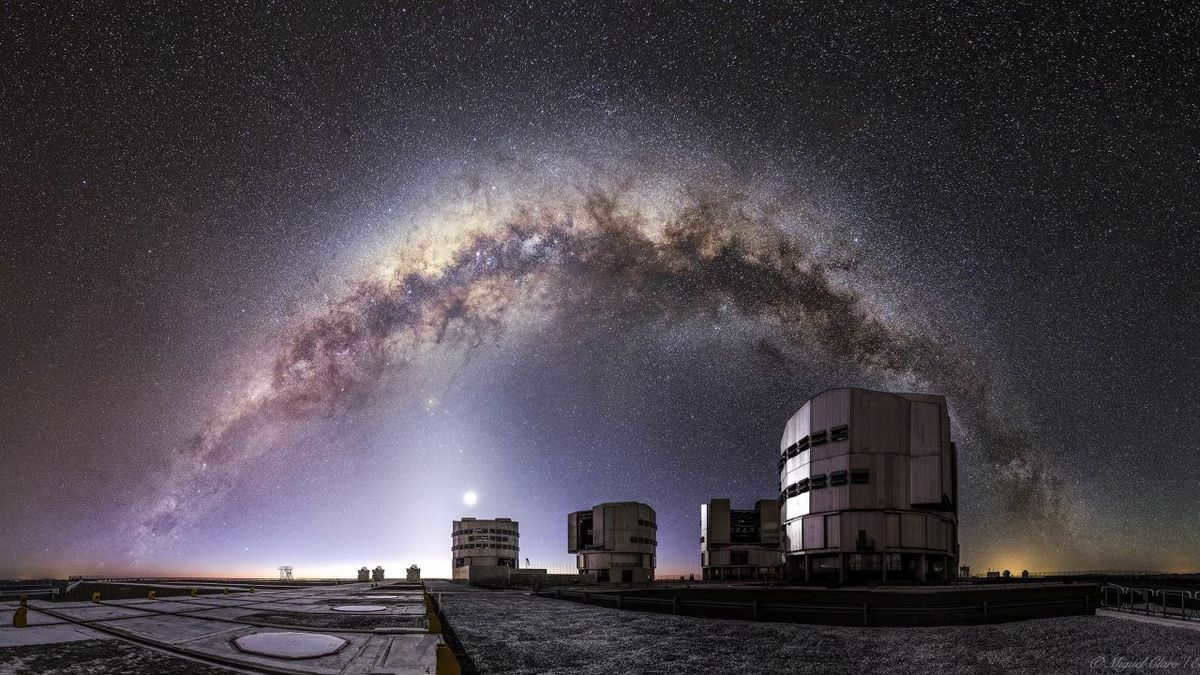
When gazing up at the night sky, one might find themselves pondering the vast number of stars that exist in the Universe. Even for those amateur astronomers who attempt to count the stars visible to the naked eye, the task proves to be quite challenging. As telescopes increase in size, more stars come into view, making the counting process even more time-consuming. So, how exactly do astronomers determine the total number of stars in the universe?
“The first hurdle we must overcome is determining whether our universe is finite or infinite,” explained David Kornreich, an assistant professor at Ithaca College in New York State. “As of now, I am unable to provide a definitive answer as we have yet to determine the true size of the universe.”
The visible portion of the universe appears to have a reverse timeline of approximately 13.8 billion years, but it is possible that there are additional unseen realms. Certain astronomers even speculate that our reality may exist within a “multiverse,” where other universes similar to ours are contained within a larger entity.
One possible approach to determining the number of stars in the average galaxy is to estimate the number of galaxies in the universe and multiply it by the estimated number of stars in each galaxy. However, this task is highly complex due to variations in visibility, such as some galaxies being more visible in the infrared spectrum than in the visible spectrum. Additionally, there are other challenges to consider when making these estimations.

As reported by Nature magazine, in October 2016, the Hubble Space Telescope unveiled an astonishing discovery: the existence of approximately 2 trillion galaxies in the visible universe, which is ten times more than what was previously believed. On average, each of these galaxies contains around 100 million stars.
A collection of galactic clusters
Related articles:
However, it is possible that not all the stars within a galaxy can be observed using telescopes. A study conducted in 2008, utilizing data from the Sloan Digital Sky Survey (which documents all visible celestial objects within one-third of the celestial sphere), discovered approximately 48 million stars, approximately half of what astronomers initially anticipated. A star similar to our Sun may not even be included in such a comprehensive catalog. Consequently, numerous astronomers rely on the mass of a galaxy to estimate the number of stars it contains. This method, however, presents certain challenges as it necessitates the elimination of dark matter and galactic rotation before an estimation can be made.

Missions like Gaia, a spacecraft launched by the European Space Agency in 2013, have the potential to provide us with more answers. Gaia’s objective is to create an accurate map of the Milky Way by pinpointing the locations of approximately 1 billion stars. This mission is a continuation of the previous Hipparchus mission, which successfully identified 100,000 stars and mapped 1 million stars with less precision. According to the European Space Agency, the data collected from Gaia will be made available to the public in June 2022.
“Gaia will meticulously track each of its targeted stars 70 times over the course of five years, providing precise information on their positions, distances, movements, and changes in brightness,” states the European Space Agency’s official website.
By combining these measurements, we will obtain an unparalleled understanding of the structure and development of our galaxy. Thanks to missions like this, we are getting closer to answering the ultimate question: how many stars exist in our galaxy and the universe?
The Observable Universe
However, even if we limit our definition to the “observable” universe – what we can see – determining the number of stars within it still requires knowledge of the universe’s size. This presents two challenges: the expansion of the universe and the curvature of space-time.
To illustrate, consider the fact that light from the most distant objects would take approximately 13.8 billion light years to reach Earth. Therefore, the radius of the observable universe should be 13.8 billion light years.
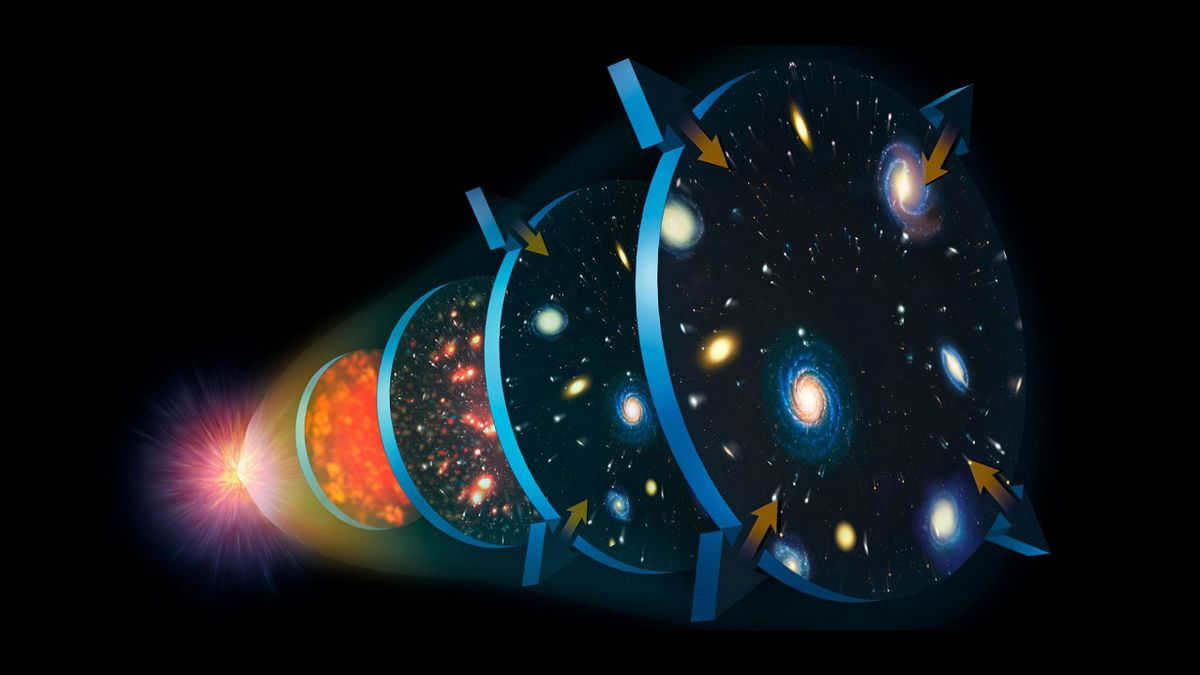
However, it is not a simple task. Due to the expansion of the universe, the estimated radius of the universe is approximately 48 billion light years. Nevertheless, this estimate is not definitive as space-time can also warp.
Observing the Galaxy
According to the Harvard-Smithsonian Center for Astrophysics, counting stars is easier when they are located within galaxies, as they tend to cluster there. To begin estimating the number of stars, one would need to estimate the number of galaxies and calculate an average.
There are approximately 100 billion solar masses of stars in the Milky Way galaxy, according to some calculations. On average, this translates to around 100 billion stars in our galaxy. However, this number may vary depending on the sizes of stars in comparison to our Sun. There are also estimates suggesting that the number of stars in the Milky Way could be as high as 200 billion or even more.
The Hubble Space Telescope team has conducted experiments that reveal the astonishing number of galaxies in the universe. Over the years, the telescope has focused its detector on a small area of the sky to count the galaxies within it. These observations have been carried out both before and after the telescope’s modernization.

In 1995, a photograph of a small area in the constellation Ursa Major captured approximately 3,000 faint galaxies. By 2003-2004, scientists utilized upgraded equipment and observed the constellation Furnace, uncovering approximately 10,000 galaxies. A more comprehensive survey conducted in 2012, using even more advanced instruments, revealed around 5,500 galaxies.
Kornreich provided a rough estimate of there being 10 trillion galaxies in the universe. However, he emphasized that this number is likely a significant underestimate, as the use of more precise instruments could potentially detect even more galaxies within our universe.





